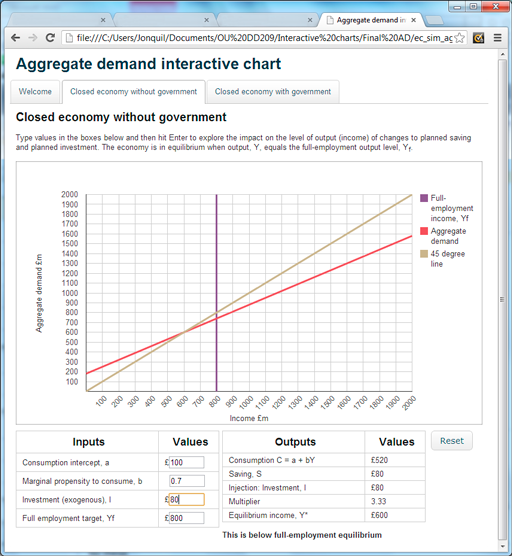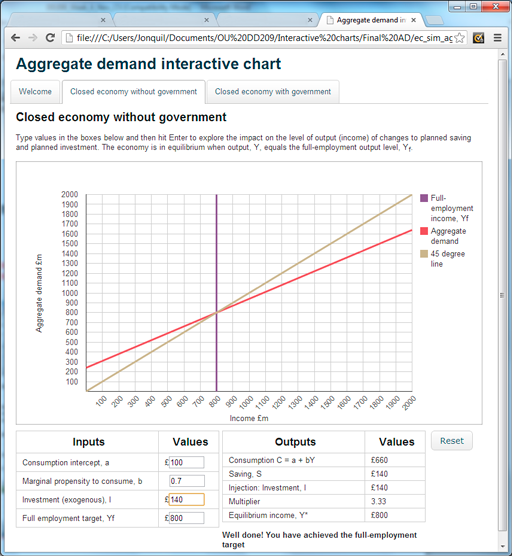5.1 Underemployment equilibrium
Equilibrium occurs when aggregate demand equals income, so, in the previous activity, when AD is equal to income at £600. But it may be that AD of £800 equal to Yf is needed to support full employment, so equilibrium would need to occur at an income level of £800. Given current consumption and investment habits, however, if income stood at £800, AD would be less than £800, as we can see from the fact that the C + I line lies beneath the 45-degree line at an income of £800. To achieve full employment, a policy intervention would be needed to stimulate demand sufficiently to bring about equilibrium at an income level of £800.
You will now use an Aggregate Demand tool to explore how we could move the economy to a full employment equilibrium.
Activity 8
Select the link below to access the tool.
Aggregate Demand tool [Tip: hold Ctrl and click a link to open it in a new tab. (Hide tip)]
Place yourself in the tab 'Closed economy without government'. This means the economy has no government, and demand comprises only consumption and investment. Complete the following tasks.
Task A
(a) Set the inputs to the following values: exogenous consumption (labelled 'Consumption intercept' equals 100, the marginal propensity to consume is 0.7, investment is set at 80 and full-employment income is 800.
Answer
The outputs and chart in the tool should look like this. You can see that this economy is currently in equilibrium at an income of 600 but we want to reach the full-employment equilibrium of 800.
Task B
(b) State by how much AD falls short of the level required to produce the full-employment income of £800.
Answer
In this example, aggregate demand at any level of income is calculated using the equation:
AD = 180 + 0.7Y
So, if equilibrium income (Y) were to be £800:
AD = 180 + 0.7 x 800 = 180 + 560 = 740
which would fall short of income by £800 – £740 = £60.
Policy intervention will be needed to give a stimulus that initially raises aggregate demand by £60.
Task C
(c) Assume that the required stimulus is going to take the form of policy to increase investment. Use the tool to change investment by the amount you calculated in (b).
Answer
If you increased investment by 60, the new amount of investment should be 140. The outputs and chart from the tool should now look like this:
Task D
(d) Describe what has happened to the equilibrium level of income as a result of the change you made in (c).
Answer
The economy is now in equilibrium at an income of £800 which is the full-employment level of income.


